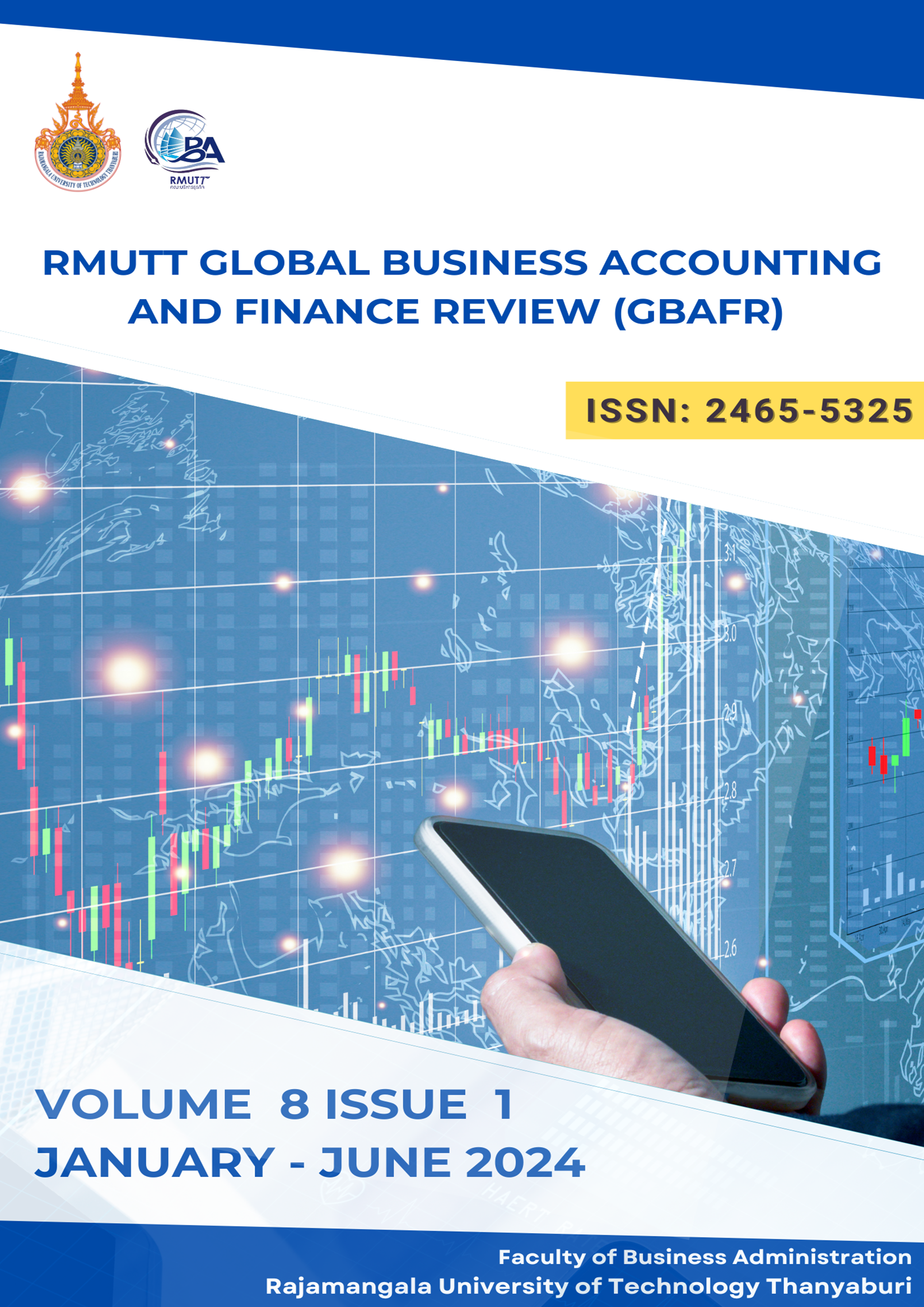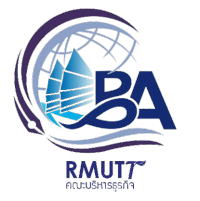RESPONSES TO DIGITAL HUMAN RESOURCE MANAGEMENT MODEL: SUGGESTIONS FROM DISRUPTIVE INNOVATION THEORY
DOI:
https://doi.org/10.60101/gbafr.2024.271771Abstract
Purpose – Considering the popularity of digital technologies, the study aims to provide additional perspective of why managers have low commitment to digital human resource management (HRM) model and how they should interpret and respond to this model.
Body of knowledge – The study indicates that rushing to adopt digital HRM model is not encouraged, even though the model has potential benefits in terms of organizational efficiency and employee experience. However, the ignorance of its usage possibilities can make HR managers and professionals lose their control over HR activities to other business units.
Implications – Managers need to understand the driving factors of digital HRM model, do critical analysis of its relation to the current business model, and evaluate potential impacts of its adoption on the organization. Based on these analyses, managers can establish a suitable response plan to the disruption, which can range from ignorance at the first time to full integration in the long run.
Originality/Value – The emergence of digital technologies have disrupted the way organization operate their internal business processes. Compared to other functions, human resource management is likely to be overlooked in organization’s digital transformation plan, even though human resource is considered to be an important resource for its competitive advantages in today’s uncertain and fast changing world. The study contributes to drawing additional attention to the importance of digital HRM in organization’s digital transformation plan and provides additional perspective to interpret and implement digital HRM.
References
Al-Hawary, S. I. S, Mohammad, A. S., Al-Syasneh, M. S., Qandah, M. S. F., & Alhajri, T. M. S. (2020). Organisational learning capabilities of the commercial banks in Jordan: do electronic human resources management practices matter?. International Journal of Learning and Intellectual Capital, 17(3), 242-266.
Amit, R., & Zott, C. (2012). Creating value through business model innovation. MIT Sloan Management Review, 53(3), 41-49.
Anderson, N., Potočnik, K., & Zhou, J. (2014). Innovation and creativity in organizations: A state-of-the-science review, prospective commentary, and guiding framework. Journal of Management, 40(5), 1297–1333.
Angrave, D., Charlwood, A., Kirkpatrick, I., Lawrence, M., & Stuart, M. (2016). HR and analytics: why HR is set to fail the big data challenge. Human Resource Management Journal, 26(1), 1-11.
Assink, M. (2006). Inhibitors of disruptive innovation capability: a conceptual model. European Journal of Innovation Management, 9(2), 215-233.
Belizón, M. J., & Kieran, S. (2021). Human resources analytics: A legitimacy process. Human Resource Management Journal, 32, 603-630.
Blom, T., Plessis, Y. D. & Kazeroony, H. (2019). The role of electronic human resource management in diverse workforce efficiency. SA Journal of Human Resource Management, 17, a1118
Boer, H. & During, W. E. (2001). Innovation, what innovation? A comparison between product, process and organizational innovation. International Journal of Technology Management, 22(1/2/3), 83-107.
Bondarouk, T., Harms, R., & Lepak, D. (2017b). Does e-HRM lead to better HRM service?. The International Journal of Human Resource Management, 28(9), 1332–1362.
Bondarouk, T., Parry, E., & Furtmueller, E. (2017a). Electronic HRM: four decades of research on adoption and consequences. The International Journal of Human Resource Management, 28(1), 98–131.
Bondarouk, T. V., & Ruel, H. J. M. (2009). Introduction Electronic Human Resource Management: challenges in the digital era. The International Journal of Human Resource Management, 20(3), 505–514.
Chapano, M., Mey, M. R., & Werner, A. (2023). Perceived challenges: Unfounded reasons for not forging ahead with digital human resource management practices. SA Journal of Human Resource Management, 21, a2085.
Charitou, C. D., & Markides, C. C. (2003). Responses to disruptive strategic innovation. MIT Sloan Management Review, 44(2), 55-63.
Christensen, C. M., & Bower, J. L. (1996). Customer power, strategic investment, and the failure of leading firms. Strategic Management Journal, 17, 197-218.
Christensen, C.M., Raynor, M., & McDonald, R. (2015). What is disruptive innovation? Harvard Business Review, 93(12), 44-53.
Chugunova, M. & Danilov, A. (2022). Use of digital technologies for HR management in Germany: Survey Evidence. CESifo Economic Studies, 69(2), 69–90.
Cooke, F.L., Dickmann, M., & Parry., R. (2022). Building sustainable societies through human-centred human resource management: emerging issues and research opportunities. The International Journal of Human Resource Management, 33(1), 1-15.
Cozzolino, A., Verona, G., & Rothaermel, F. T. (2018). Unpacking the disruption process: new Technology, business models, and incumbent adaptation. Journal of Management Studies, 55(7), 1166-1202.
DeSanctis, G. (1986). Human resource information systems: A current assessment. MIS Quarterly, 10(1), 15-27.
Droege, S., & Johnson, N. B. (2010). Limitations of low-end disruptive innovation strategies. The International Journal of Human Resource Management, 21(2), 242–259.
Gupta, M., Hassan, Y., Pandey, J. & Kushwaha, A. (2022). Decoding the dark shades of electronic human resource management. International Journal of Manpower, 43(1), 12-31.
Habtay, S. R. (2012). A firm-level analysis on the relative difference between technology-driven and market-driven disruptive business model innovations. Creativity And Innovation Management, 21(3), 290-303.
Hamidianpour, F., Esmaeilpour, M. & Firoozi, H. (2016). Assessing the impact of electronic human resource management on creation of organizational agility: a study in the Bushehr banks, Iran. Asian Social Science, 12(7), 105.
Henderson, R. (2006). The innovator’s dilemma as a problem of organizational competence. The Journal of Product Innovation Management, 23, 5-11.
Iqbal, N., Ahmad, M., Raziq, M.M. & Borini, F.M. (2019). Linking e-HRM practices and organizational outcomes: empirical analysis of line manager’s perception. Review of Business Management, 21(1), 48-69.
Jaakkola, E. (2020). Designing conceptual articles: four approaches. AMS Review, 10, 18-26.
Jani, A., Muduli, A. & Kishore, K. (2023). Human resource transformation in India: examining the role digital human resource technology and human resource role. International Journal of Organizational Analysis, 31(4), 959-972.
Jewell, P. (2017). Three keys for achieving HR excellence: HR is now a key player in business strategy. HR Strategy and Planning Excellence Essentials. https://www.proquest.com/magazines/three-keys-achieving-hr-excellence-is-now-key/docview/2043641529/se-2
Kallinikos, J., Aaltonen, A. & Marton, A. (2013). The Ambivalent Ontology of Digital Artifacts. MIS Quarterly, 37(2), 357-370.
Kim, S., Wang, Y., & Boon, C. (2020). Sixty years of research on technology and human resourcemanagement: Looking back and looking forward. Human Resource Management, 60, 229–247.
Kim, W.C., & Mauborgne, R. (2019). Nondisruptive innovation: Rethinking innovation and growth. MIT Sloan Management Review, 60(3), 46-55.
King, A.A., & Baatartogtokh, B. (2015). How useful is the theory of disruptive innovation? MIT Sloan Management Review, 57(1), 77-90.
Kokshagina, O. & Schneider, S. (2023). The Digital Workplace: Navigating in a Jungle of Paradoxical Tensions. California Management Review, 65(2), 129–155.
Lin, L. H. (2011). Electronic human resource management and organizational innovation: the roles of information technology and virtual organizational structure. The International Journal of Human Resource Management, 22(2), 235-257.
Malik, A., Budhwar, P., Patel, C., & Srikanth, N. R. (2022). May the bots be with you! Delivering HR cost-effectiveness and individualized employee experiences in an MNE. The International Journal of Human Resource Management, 33(6), 1148–1178.
Markides, C. (2006). Disruptive innovation: In need of better theory. The Journal of Product Innovation Management, 23, 19-25.
Marler, J. H., & Fisher, S. L. (2013). An evidence-based review of e-HRM and strategic human resource management. Human Resource Management Review, 23, 18-36.
Martin, G., & Reddington, M. (2010). Theorizing the links between e-HR and strategic HRM: a model, case illustration and reflections. The International Journal of Human Resource Management, 21(10), 1553–1574.
Martínez-Morán, P. C., Urgoiti, J. M. F. -R., Díez, F., & Solabarrieta, J. (2021). The digital transformation of the talent management process: A Spanish business case. Sustainability, 13, 2264.
Mathis, R. L., Jackson, J. H., Valentine, S. R., & Meglich, P. A. (2017). Human Resource Management. Cengage Learning.
McCausland, T. (2023). Is Christensen’s theory of ‘disruptive innovation’ still relevant?. Research-Technology Management, 66(4), 51-55.
Nambisan, S. (2017). Digital entrepreneurship: Toward a digital technology perspective of entrepreneurship. Entrepreneurship Theory and Practice, 41(6), 1029-1055.
Nankervis, A., Connell, J., Cameron, R., Montague, A., & Prikshat, V. (2021). ‘Are we there yet?’ Australian HR professionals and the Fourth Industrial Revolution. Asia Pacific Journal of Human Resources, 59, 3–19.
Nayak, S., Budhwar, P., Pereira, V. & Malik, A. (2022). Exploring the dark-side of E-HRM: a study of social networking sites and deviant workplace behavior. International Journal of Manpower, 43(1), 89-115.
Njoku, E. & Ebie, S. (2015). Shaping innovativeness and creativity with electronic resource management (e-HRM): exploring a conceptual framework. Knowledge Management, 15(3), 1-14.
Osiyevskyy, O., & Dewald, J. (2015). Explorative versus exploitative business model change: the cognitive antecedents of firm-level responses to disruptive innovation. Strategic Entrepreneurship Journal, 9, 58–78.
Palumbo, R. (2022). Does digitizing involve desensitizing? Strategic insights into the side effects of workplace digitization. Public Management Review, 24(7), 975–1000.
Parry, E. (2011). An examination of e-HRM as a means to increase the value of the HR function. The International Journal of Human Resource Management, 22(5), 1146–1162.
Paul, J., Alhassan, I., Binsaif, N., & Singh, P. (2023). Digital entrepreneurship research: A systematic review. Journal of Business Research, 156, 113507.
Petzold, N., Landinez, L., & Baaken, T. (2019). Disruptive innovation from a process view: A systematic literature review. Creativity & Innovation Management, 28(2), 157-174.
Popkova, E. G., & Sergi, B. S. (2020). Human capital and AI in industry 4.0. Convergence and divergence in social entrepreneurship in Russia. Journal of Intellectual Capital, 21(4), 565-581.
Priyashantha, K. G. (2023). Disruptive technologies for human resource management: a conceptual framework development and research agenda. Journal of Work-Applied Management, 15(1), 21-36.
Sandström, C., Berglund, H., & Magnusson, M. (2014). Symmetric assumptions in the theory of disruptive innovation: Theoretical and managerial Implications. Creativity And Innovation Management, 23(4), 472-483.
Strohmeier, S. (2009). Concepts of e-HRM consequences: a categorisation, review and suggestion. The International Journal of Human Resource Management, 20(3), 528–543.
Suen, H. Y., & Chang, H. L. (2017). Toward multi-stakeholder value: virtual human resource management. Sustainability, 9, 2177.
Tambe, P., Cappelli, P., & Yakubovich, V. (2019). Artificial intelligence in human resources management: Challenges and a path forward. California Management Review, 61(4), 15–42.
Teece, D. J. (2010). Business models, business strategy and innovation. Long Range Planning, 43, 172-194.
Theres, C., & Strohmeier, S. (2023). Met the expectations? A meta-analysis of the performance consequences of digital HRM. The International Journal of Human Resource Management, 34(20), 3857-3892.
Thite, M. (2022). Digital human resource development: where are we? Where should we go and how do we go there? Human Resource Development International, 25(1), 87–103.
Tiwana, A., Konsynski, B. & Bush, A. A. (2010). Research commentary: Platform evolution: coevolution of platform architecture, governance, and environmental dynamics. Information Systems Research, 21(4), 675-687.
Ulatowska, R., Wainio, E. & Pierzchała, M. (2023). Digital transformation in HRM of the modern business service sector in Finland and Poland. Journal of Organizational Change Management, 36(7), 1180-1192.
Vrontis, D., Christofi, M., Pereira, V., Tarba, S., Makrides, A., & Trichina, E. (2022). Artificial intelligence, robotics, advanced technologies and human resource management: a systematic review. The International Journal of Human Resource Management, 33(6), 1237–1266.
Wiblen, S., & Marler, J.H. (2021). Digitalised talent management and automated talent decisions: the implications for HR professionals. International Journal of Human Resource Management, 32(12), 2592–2621.
William, A.A & Singh, K. (2023). The assessment of e-HRM tools and its impact on HRM system effectiveness and organizational effectiveness: An empirical study of selected multinational companies in Ghana. The Electronic Journal of Information Systems in Developing Countries, 89(5), e12267.
Yu, D., & Hang, C.C. (2009). A reflective review of disruptive innovation theory. International Journal of Management Reviews, 12, 435–452.
Zavyalova, E., Sokolov, D., Kucherov, D., & Lisovskaya, A. (2022). The digitalization of human resource management: Present and future. Foresight and Sti Governance, 16(2), 42–51.
Zhang, J. & Chen, Z. (2023). Exploring Human Resource Management Digital Transformation in the Digital Age. Journal of the Knowledge Economy, 15, 1482-1498. https://doi.org/10.1007/s13132-023-01214-y.
Zhou, Y., & Zou, Y. (2023). The effects of congruence between digital HRM systems and previous non-digital HRM systems on firms’ data-driven insights. Asia Pacific Journal of Human Resources, 61, 952–980.
Downloads
Published
How to Cite
Issue
Section
License
Copyright (c) 2024 Faculty of Business Administration, Rajamangala University of Technology Thanyaburi

This work is licensed under a Creative Commons Attribution-NonCommercial-NoDerivatives 4.0 International License.









